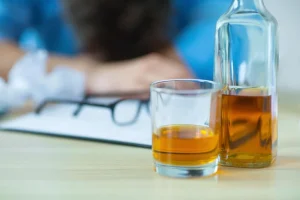
And so, you have this adolescent who cognitively can identify ways to think through problems beyond concrete black-and-white thinking. So, on the surface, they might seem to have some adult-like thinking processes, that part of their brain that serves as the impulse mediator, almost that sense of brakes, is not yet well developed. With Nevada experiencing also a devastating number of opioid overdoses, this crisis here has become a focal point of both research and frontline intervention. As part of the Brookings Mountain West Partnership between UNLV and the Brookings Institution, I am speaking with experts who are directly confronting the issue. This guide shows how HBCUs, as well as other institutions that primarily serve students from a distinct background, region, or culture, can create prevention strategies to meet the unique needs of those students.

Resources for Middle School Youth (Ages 10–
- Inhaling these drugs can cause psychosis and even permanent brain damage due to oxygen deprivation, experts warn.
- Teens may be more likely to try substances for the first time when hanging out in a social setting.
- We know that those who start with heroin or other opioids have a strong likelihood, 1 in 3, of going on to having a use disorder versus a one-time use.
- Other contributors to this risk included increased greater life stressors within the family, resulting in greater internalizing symptoms in these youth and associations with deviant peers which directly predicted steeper escalations in adolescent substance use.
- After controlling for age, sex, birth weight, and socioeconomic status, children of mothers who abused heroin displayed significantly lower performance on quantitative and auditory memory tasks than did children in the other groups.
In 2022, reported use of any illicit drug within the past year remained at or significantly below pre-pandemic levels for all grades, with 11% of eighth graders, 21.5% of 10th graders, and 32.6% of 12th graders reporting any illicit drug use in the past year. These mixed results may in part be due to important qualifiers of the association between parental alcoholism and children’s cognitive functioning, such that cognitive impairments may only emerge in some children. For example, density or the number of alcoholic relatives appears to impact this risk. Boys with multiple generations of male alcoholic relatives (e.g., a father plus other biological male relatives) show deficits in verbal and abstract reasoning, verbal learning, performance IQ, and memory compared to boys without an alcoholic father 27,28.

Resources for Young Adults and College Students
For the 2022 survey, 48% of 12th grade students identified as male, 47% identified as female, 1% identified as other, and 4% selected the “prefer not to answer” option. Or teens may https://ecosoberhouse.com/article/5-alcoholic-types-in-alcoholism/ order substances online that promise to help in sports competition, or promote weight loss. And if they are lonely or dealing with stress, teens may use substances to distract from these feelings.
Can Using Drugs Help Me Deal With Anxiety and Depression?

Teenagers with suspected substance use problems say they turn to drugs because of a crushing need to relax and escape worries, according to research published Thursday by the Centers for Disease Control and Prevention. ABCD is a landmark study supported by the National Institutes of Health (NIH) which will increase our understanding of environmental, social, genetic, and other biological factors that affect brain and cognitive development and that can enhance or disrupt a young person’s life trajectory. Contact a treatment provider for teenage addiction treatment options today.

Economics of Prevention
So, now let’s extrapolate that model to an adolescent with an opioid use disorder. And you can really start to think about how difficult is it going to be to find those adolescents and to really get an honest, accurate prevalence rate? So, you know, you’re asking about risk factors that are specific to opioid use disorder. But we do know that some of the more high-risk risk factors, so to speak, would be working with youth who are unsheltered, who are psychiatrically ill, psychiatrically hospitalized, those in juvenile detention, which I imagine Doctor Kennedy is going to speak about, as well as those in foster care. We know that those who start with heroin or other opioids have a strong likelihood, 1 in 3, of going on to having a use disorder versus a one-time use. Among adolescents with a past year major depressive episode, mental health services were most often accessed through outpatient care and telehealth.
Understanding the Diverse Needs of Children whose Parents Abuse Substances
They may see occasional use as being safe and don’t believe they could become addicted to drugs or face consequences. The Monitoring the Future survey is given annually to students in eighth, 10th, and 12th grades who self-report their substance use behaviors over various time periods, such as past 30 days, past 12 months, and lifetime. The survey also documents students’ perception of harm, disapproval of use, and perceived availability of drugs. Notably, the survey results are released the same year the data are collected. So, I definitely see that when I go into delinquency and compare the girls who are trading sex to survive compared to their peers who may have just been in for graffiti or delinquency or something else.
- These disorders are highly disabling, frequently co-occur with and even exacerbate other mental and physical health problems, and show a strong familial pattern 2,3.
- Importantly, we have also found that these youth progress or telescope faster from the point of drinking initiation to alcohol and drug use disorders than do their peers 63.
- If a teen continues denying using drugs but the parent still suspects untruthfulness, a home drug test can uncover a teen drug problem.
- Teens may not seek drugs out but are instead introduced to substances by someone they know, such as a friend, teammate, or even a family member.
- There are many remaining questions related to the impact of parental substance abuse on parenting and child outcomes, leaving the field open for continued exploration.
- And when we look at treatment, which we might be getting to later, but this just made me think about it, one of the most robust evidence-based treatment models is multidimensional family therapy for treating youth with substance use disorder.

Do not dispose of medications by flushing them down the toilet or pouring them down the sink. Medications can be crushed and mixed into the trash (to keep them away from children and pets) or returned to teen drug abuse your local pharmacy or community drug take-back program. There have been reports of people dying the first time they use cocaine, often from sudden cardiac arrest, respiratory arrest, or seizures.
